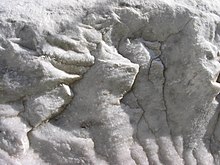**Marble Properties and Characteristics:**
– Marble originates from Ancient Greek, with various terms across languages.
– Geologically, marble forms from metamorphosed carbonate rocks with distinct mineral impurities.
– Chemistry-wise, acids degrade marble, affecting its appearance and structure.
– Marble can be polished through crystallization methods for enhanced durability and gloss.
– Microbial degradation can harm marble structures over time.
– Turkey is a prominent marble exporter, and marble is widely used in construction due to its hardness and wear resistance.
**Marble Production and Industrial Impact:**
– Marble extraction involves quarrying techniques like drilling and blasting.
– Italy, China, and Turkey are key players in the global marble production and export market.
– The U.S. and Palestine have significant contributions to the marble industry in terms of production, revenue, and employment.
– Occupational safety concerns in marble production include particulate air pollution and eye health hazards.
– Marble’s cultural significance is reflected in its association with tradition and refined taste.
**Environmental Impact and Sustainability:**
– Marble quarrying generates substantial waste, impacting the environment through pollution and water contamination.
– Efforts towards sustainability involve recycling marble waste for various applications.
– Utilizing marble sludge in paint production and other industries contributes to environmental restoration.
– Sustainable practices aim to reduce the environmental footprint of marble mining and processing.
**Cleaning, Maintenance, and Preservation of Marble:**
– Proper maintenance and cleaning practices are crucial for preserving marble surfaces.
– Techniques like crystallization and mild cleaning agents are recommended for marble care.
– Prevention of dust and corrosive substances contact is essential to maintain marble surfaces.
– Cleaning methods for marble floors and surfaces vary to ensure longevity and aesthetic appeal.
**Cultural Heritage and Artistic Significance of Marble:**
– Marble is favored for sculptures due to its properties like softness and luster.
– Various famous marble sculptures and structures worldwide showcase the artistic value of marble.
– Marble’s role in classical sculpture and its presence in renowned museums highlight its cultural importance.
– Locations named after marble and its historical significance add to its cultural associations.
Marble is a metamorphic rock consisting of carbonate minerals (most commonly calcite (CaCO3) or dolomite (CaMg(CO3)2)) that have recrystallized under the influence of heat and pressure. It has a crystalline texture, and is typically not foliated (layered), although there are exceptions.
| Metamorphic rock | |
 | |
| Composition | |
|---|---|
| Mostly calcite or dolomite | |
| Physical Characteristics | |
| Fabric | Typically not foliated |
| Relationships | |
| Protoliths | carbonate minerals, Limestone, Dolomite |
In geology, the term marble refers to metamorphosed limestone, but its use in stonemasonry more broadly encompasses unmetamorphosed limestone. Marble is commonly used for sculpture and as a building material.
